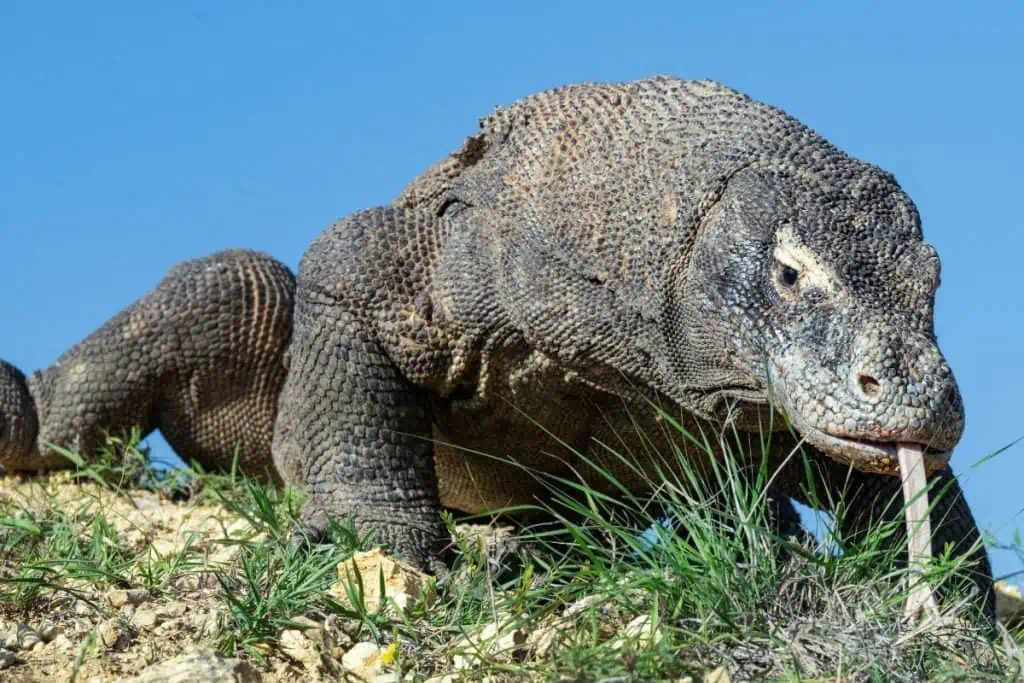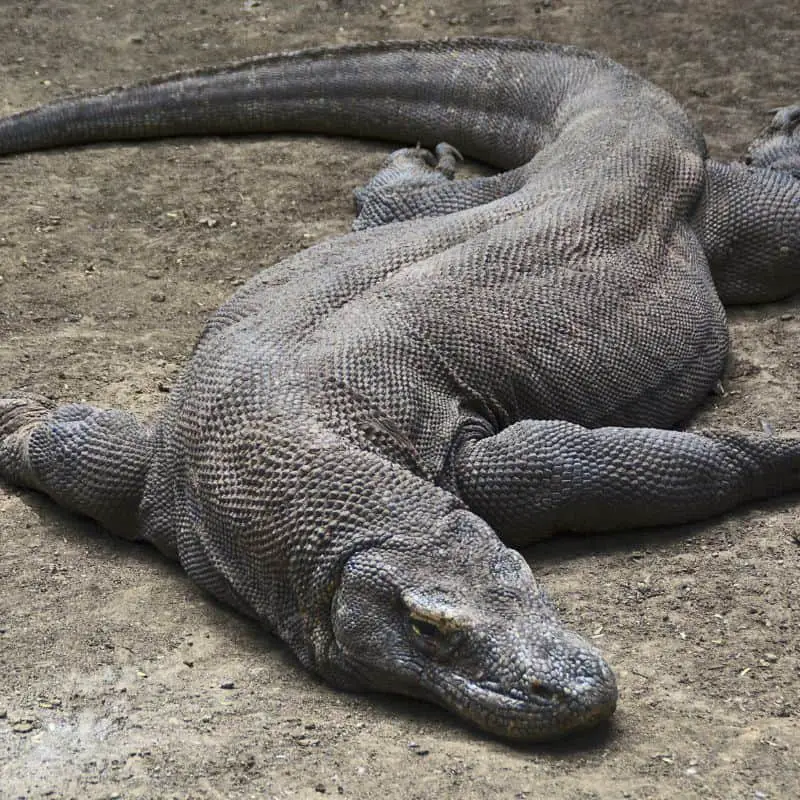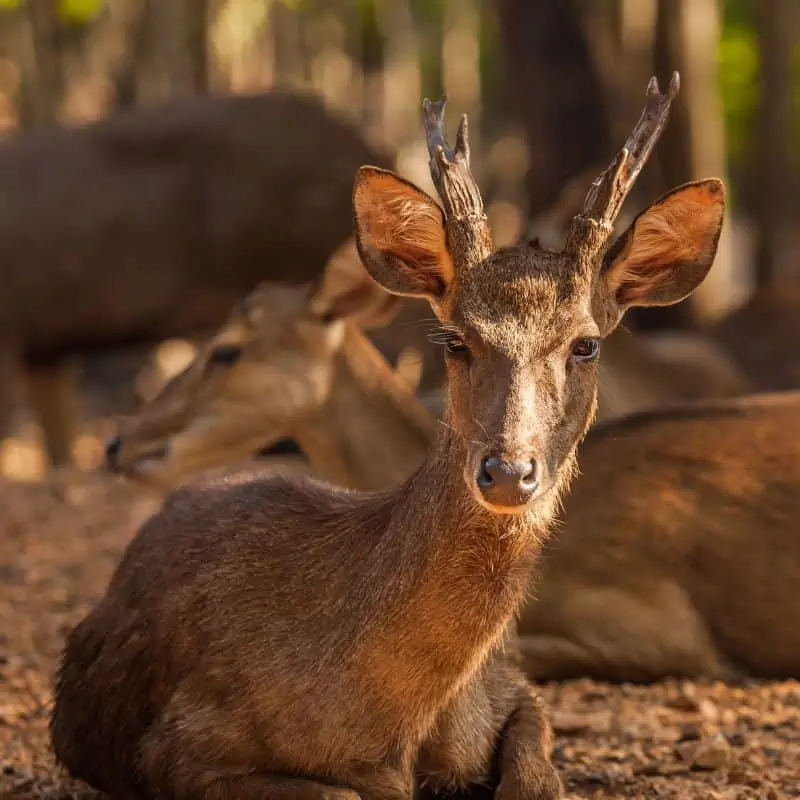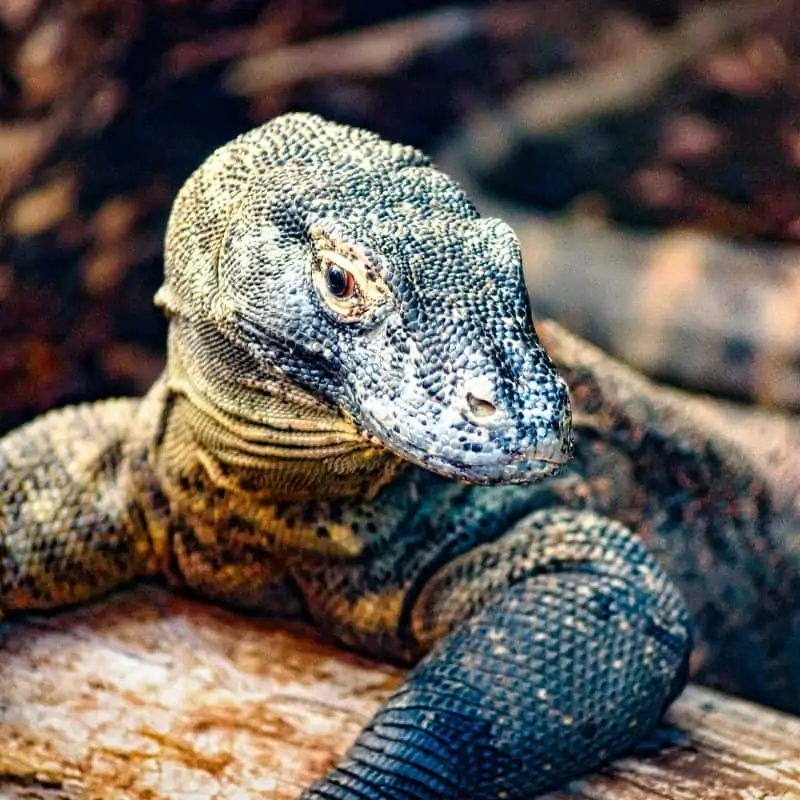Komodo dragons, scientifically known as Varanus Komodoensis, are giant, carnivorous lizards. Being the largest living species of lizard in the world, these animals are about 8 to 10 feet (2.5 to 3 meters) and weigh around 150 pounds (70 kg). But are Komodo dragons endangered?
Komodo dragons are endangered, and their population is threatened by habitat loss, poaching, and other human activities. They are primarily found on several small islands in Indonesia, including Komodo, Rinca, and Flores. They live in multiple habitats, including savannas, grasslands, and forests.
In this article, we’ll look at the threats they face, the efforts made to conserve the Komodos, and much more.

What Threats Do Komodo Dragons Face?
Most Komodo Dragons live on the Indonesian islands of Komodo, Rinca, Gili Motang, and Padar.
These islands are part of the Komodo National Park, established in 1980 to protect the Komodo dragon and its habitat. An additional location, the Island of Flores, is also inhabited by this species.
It isn’t possible to determine the exact number of Komodo dragons left in the wild, as their populations can fluctuate, and it isn’t easy to count accurately.
However, it’s estimated that there are less than 1,400 adult Komodo Dragons left in the wild.
Efforts are made to address threats and protect komodo dragons.
In addition, international conservation organizations are working to educate local communities about the importance of komodo dragon conservation and to promote sustainable practices that can help to protect the species and its habitat.
A variety of factors threaten the survival of Komodo dragons.
Here are some of the main threats the komodos face:
1. Habitat loss
Komodo dragons are found only in a small area of Indonesia. Their habitat area is used for human development by removing them from the premises. Agriculture and tourism are the main culprits responsible for land grabbing. This habitat loss drives the lizard to look for a safe space and causes them to act against surrounding human communities.

2. Poaching
Komodo dragons are sometimes hunted for their skin and their meat.
Their meat, quite ironically, is considered a delicacy in some parts of Indonesia, and the skin is used to make leather goods worldwide.
Despite being an illegal animal to domesticate, Komodo dragons are also illegally trafficked as they make exotic pets for wealthy individuals.
3. The Food Hunt
Komodo dragons are at the top of the wild food chain, but they face competition for food from humans, who often hunt the same prey species that the dragons rely on for sustenance.
One significant issue is the poaching and illegal hunting of the Timor deer, an essential prey for Komodos in the wild.
In many cases, poachers have also started forest fires to flush out the prey that Komodo Dragons rely on in their natural food chain.

4. Climate Change
Rising temperatures and changing weather patterns due to climate change could affect the habitat and food availability of komodo dragons.
Loss of habitat due to rising sea levels on the island and habitat degradation have been substantial problems for the Komodo dragons.
They do have the ability to swim and survive, but they’re land-dwelling creatures.
5. Disease
Komodo dragons are prone to certain conditions, such as salmonella, which can spread rapidly and threaten the species’ survival.
It’s also important to note that there is a lower amount of female Komodos in the total population, so sickness can lead to a further decline in reproduction.
Efforts for Conservation of Komodos Dragons
The Komodo dragon is now a vulnerable species, so conservation efforts are essential to ensure their survival.
The Indonesian Government and several conservation organizations are working to conserve and protect komodo dragons and their habitats.
One of the significant efforts to conserve Komodo dragons is establishing protected areas, such as Komodo National Park in Indonesia, which spreads over an area of 1,700 square kilometers and is home to a large population of Komodo dragons.
The Indonesian Ministry of Environment and Forestry manages the park, and it is a UNESCO World Heritage Site. There are also efforts to breed Komodo dragons in captivity to help ensure the species’ survival.
Overall, the efforts to conserve Komodo dragons involve a combination of Government, nonprofit, and community-based initiatives to protect these animals and their habitats.
5 Organizations Dedicated to Conserving Komodo Dragons
Apart from The Komodo National Park, managed by the Indonesian Government, several other programs are dedicated to the conservation and safety of wildlife, specifically endangered species.
Examples of a few are given below:
1. Komodo Survival Program (KSP)
The Komodo Survival Program is a conservation organization dedicated to protecting and preserving Komodo dragons and their habitat.
The organization works with local communities and governments to develop conservation strategies and promote sustainable tourism.
2. Indonesian Nature Conservation Agency (BKSDA)
The Indonesian Nature Conservation Agency is a government agency responsible for conserving and protecting natural resources and biodiversity in Indonesia, including the Komodo dragon.
The agency works to preserve and safeguard Komodo dragons through research, education, and habitat management.
3. Komodo Island Foundation
The Komodo Island Foundation is a nonprofit organization dedicated to conserving Komodo dragons and their habitat on Komodo Island, Indonesia.
The organization works to protect the island’s ecosystems and promote sustainable tourism.
4. World Wildlife Fund (WWF)
The World Wildlife Fund is a global conservation organization that protects threatened species and their habitats worldwide.
The organization has a program dedicated to conserving Komodo dragons and their habitat in Indonesia.
5. The Nature Conservancy
The Nature Conservancy is a global conservation organization that works to protect the lands and waters on which all life depends.
The organization has a program dedicated to conserving Komodo dragons and their habitat in Indonesia.
The Nature Conservancy works with local communities and governments to develop conservation strategies and promote sustainable land use practices.
Final Thoughts On How Many Komodo Dragons Are Left
The Komodo Dragon species is endangered for many reasons, primarily climate change and human activity.
The population of Komodo dragons has reduced drastically in the past fifty years to less than 1,400 mature animals. If extreme care isn’t provided to protect the population of Komodo dragons, they might soon go extinct.
While efforts have been carried out to protect Komodo dragons, much is still to be done to protect them.

FAQS
What Is the Average Lifespan of Komodo Dragons?
The average lifespan of a Komodo dragon is around 30 years. They can live longer if captive and given the proper care. In the wild, they live shorter due to predation, disease, and other natural causes of mortality.
What Would Happen if Komodo Dragons Went Extinct?
The ecosystem will face a devastating setback if Komodo Dragons bid us farewell once and for all.
When Was the Komodo National Park Established?
The Komodo National Park (KNP) was established in 1980. Komodo National Park includes four islands: Komodo, Rinca, Gili Motang, and Gili Dasami.
What Were the Earliest Actions of Protection Provided to Komodo Dragons?
Dutch authorities took some of the earliest actions taken to protect Komodo dragons. Their governing bodies restricted access to islands with komodo populations in 1920. Later in 1937, areas of Komodo and Rinca were designated as reserves. In 1938, a ban was imposed on the exports of Komodo dragons.
